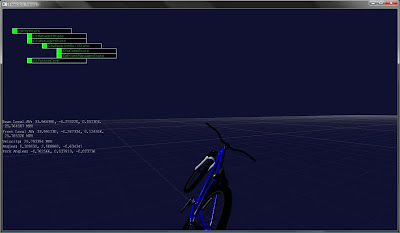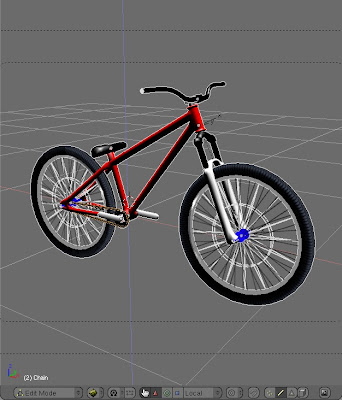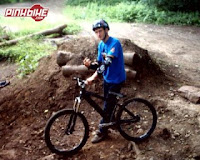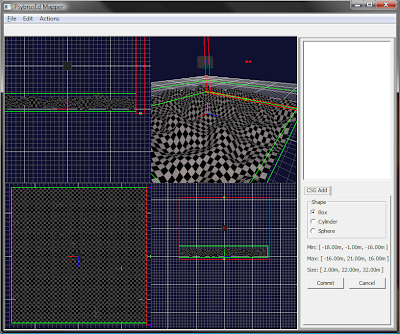Even though I've been working late at work, I've still found the motivation to come home and grind a bit to get somewhere with Freecross Frenzy. Since I last posted, I've knocked up a quick rig and control mech using my old ODE wrapper from my dissertation. So far the control mech actually works, but is far from what I want. Biggest problem so far is realising that you can't let the player directly control the steering - it is FAR too unstable! Reading up on bike dynamics, its much better to let the player influence lean, and just moderate how much the front fork actually turns. I'm just doing this by applying a torque to try and keep the fork straight, it works, but doesn't seem a particularly nice way of doing it.
Balance is another issue I've notice problems with - bikes are stupidly unstable. 2 wheels, very small contact with the ground - It's gonna fall unless the rider corrects. Currently, I'm also applying a torque to the frame of the bike to keep it at the targetting lean angle. As with steering, this is not how I aim to keep it, but it works bloody well! The bike can stay balanced with minor leaning at 0MPH, and can lean over 45 degrees either side when moving at over 20MPH. Some how I feel I'll be writing my own friction model to deal with all this correctly, as over 45 degrees of roll on a flat surface is NOT going to happen in reality!
Tonight, I took a bit of time out of the physics side, and fixed up my material system and wrote some shader code. Previously I'd mentioned using Blender for my modelling purposes as I know it well - I found that it exports FBX pretty well - missing some bits, but kicks out enough to work with, so I've went with FBX as my primary file format. I've spent the night forcefully pulling values out of FbxSdk to fill in material properties for lighting, and realised Blender doesn't kick out quite what I need - but I need to make ends meet and just go with it for the mean time until I get a material editor as part of PsybrusEd finished up. Quickly implemented simple diffuse lighting, and specular lighting using Phong shading. the result of just over a weeks work and a few hours here and there playing Left 4 Dead:




